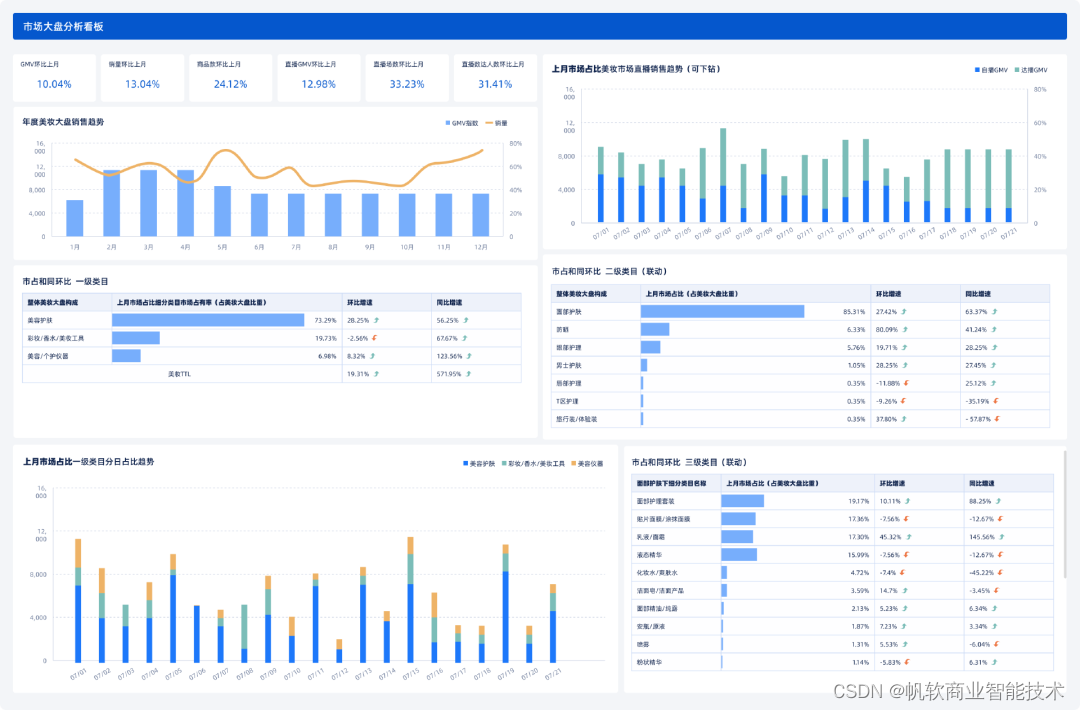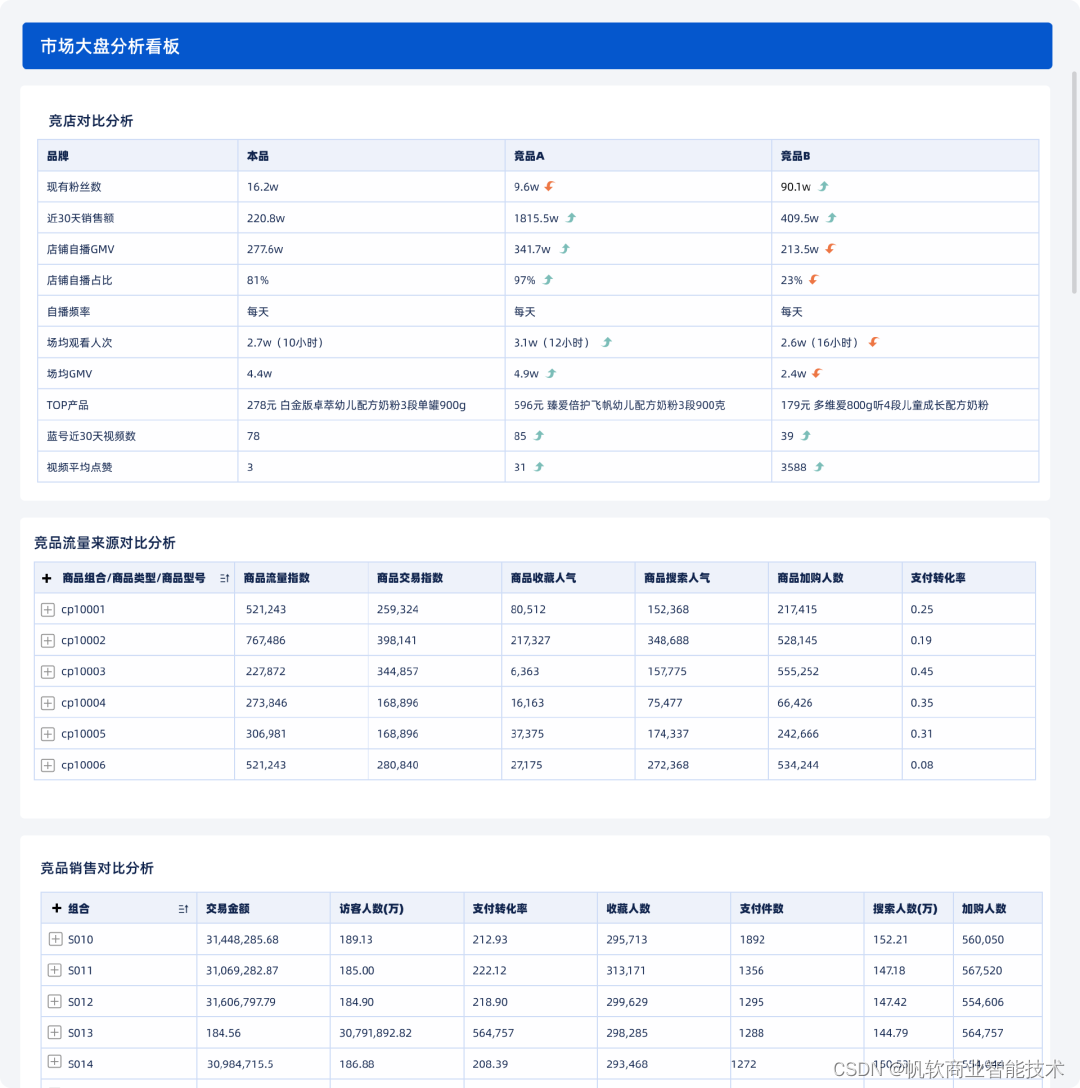As an innovative shopping experience, live e-commerce has quickly won the favor of consumers with its intuitive, real-time and interactive features. In this new sales model, products are no longer simply displayed on the main product image and detail page, but are displayed to consumers through live broadcast, bringing consumers a more realistic and three-dimensional shopping experience.
Due to the characteristics of live e-commerce such as real-time interactivity and integration of planting and weeding, data is more valuable in this model. Real-time data analysis can help live broadcasts achieve real-time monitoring and strategy adjustments, precise recommendations and personalized marketing, thereby improving user satisfaction and increasing sales conversion rates.
However, at present, the current situation of live broadcast e-commerce data analysis of domestic e-commerce companies is worrying, and they often face the following problems:

In response to the data challenges faced by live broadcast e-commerce, Fanruan has launched a comprehensive solution - "Live Broadcast E-commerce Data Solution" ”, helping enterprises optimize operations, increase profits, and achieve higher business growth.
Based on the existing functional department resources of e-commerce companies, through the data aggregation capabilities of products, the core data of live e-commerce can be summarized, including a series of key data such as market trends, operating conditions, and channel effects.
By centrally integrating and intelligently analyzing these data, companies can easily grasp the full picture of live broadcast e-commerce operations. Precise data management can provide solid support for enterprises' operational decisions and achieve efficient digital management of live broadcast e-commerce operations.
The article is long and will be divided into 3 parts to expand in detail. The specific plan structure is as follows:

1 Market analysis: Overview of industry insights and exploration of business opportunities
. With the advent of the information age, the live broadcast e-commerce industry is booming and has become a major enterprise A hot area for deployment. In the fiercely competitive market environment, how to tap industry opportunities and seize market share has become an urgent problem that every enterprise needs to solve. Therefore, companies need to deeply interpret market data from top to bottom and from three major perspectives in order to effectively use data, differentiate their competition, and stand out.
Industry perspective: From the perspective of the industry, analyze market trends, including market share of the category, sales trends and other sectors, analyze the overall industry structure, identify popular categories and emerging trends in the industry, and adjust product portfolio and promotion strategies in a timely manner.
Category perspective: Starting from the data perspective of a specific product category, companies can understand the market share, sales, user feedback, etc. of the category. Combined with changes in market category structure, look for category growth angles and category opportunities.
Competitive product perspective: Observe the core indicator data of competing products and understand their market share, product features, marketing methods, etc. from multiple dimensions. Identify the strengths and weaknesses of competitors, formulate effective competitive strategies, and find unique points of differentiation.
From the overall trend of the market, to the analysis of core categories, to the comparison between competing products, we go deep into each layer and combine the dots, lines and surfaces to gain a comprehensive insight into the overview of the live broadcast e-commerce industry.
1. Look at the overall performance of the market and look for industry opportunities.
The overall performance of the market can help e-commerce companies evaluate market potential and analyze the competitive landscape, and at the same time better find industry opportunities: market GMV and market share for each category, itself and competing products. Change trends, understand the consumption power trends of each platform and its own positioning in the industry, and formulate corresponding competitive strategies.
Taking beauty cosmetics as an example, through the linkage of the first-level categories, drill down to the second-level categories, and then drill down to the market share and year-on-year comparison of the third-level categories, the data can be clearly compared and analyzed. If the market is growing but its own market share is declining, it is necessary to trace back to the daily operation report to analyze whether the achievement of operational goals is abnormal, and trace back to which month, which day, which store, and which product did not achieve the goal?
At the same time, for live broadcasts, the proportion of live broadcasts and upstream broadcasts can also reflect the health level. At different stages, companies have different priorities for self-broadcasting and large-scale broadcasting. For example, in the early stage, you may focus on Dabo, but in the later stage, in order to build brand power, you need to focus on self-broadcasting. Both methods have their own advantages. Choosing the appropriate live broadcast format depends on the merchant's own brand positioning, marketing strategy and target audience. Comparing these two live broadcast forms can help merchants better understand their own strengths and weaknesses and formulate more appropriate live broadcast marketing strategies.

What large-cap data can bring to e-commerce companies is also the rational planning of resources and the discovery of emerging trends. According to the distribution of the number of categories at all levels, match the investment in your own vertical category accounts, so as to achieve large investment in large categories and small investment in small categories, and rationally plan limited resources.
At the same time, the overall performance of the industry will be affected by many factors such as new technologies and consumption habits. It is important to grasp these trends in a timely manner, look for potential categories that may appear in the long-tail market, enter the market early, and reap the dividends of the long-tail market.
2. Analyze core categories and clarify industry positioning
In live streaming e-commerce, core categories refer to major product categories with large sales volume and high popularity. Through in-depth analysis of core categories, companies can understand market hot spots and find the best entry point to meet consumer needs.
For example, in the current live broadcast e-commerce market, beauty, clothing, home furnishing and other categories have become core products and are loved by consumers. By understanding the sales trends and consumer preferences of these core categories, companies can accurately position themselves in product design, marketing strategies, etc., and provide more attractive products and services.
Ranking analysis is carried out according to the drill-down layers of "brand-store-commodity" to show the ranking of TOP brands in the current category and its own brand. Through the change trend of its own brand's industry ranking, it can find the brand's positioning in the industry track. .
From the hot-selling words in these industry subcategories, we can clearly understand the preferences of consumers in the subcategory in which we are located. This data can help merchants better select models with greater market potential for promotion.

3. Look at the comparison of competing products and create differentiated competition.
There is strong competition in the industry. It is necessary to keep a close eye on the industry share of competing products through multiple channels and brands from a macro perspective. Because the total industry volume is fixed, only by maintaining market sensitivity , Seize enough market share to ensure its stable and sustainable development.
In the details, you can also formulate your own strategy based on the playing style of competing products, get the results you want, highlight your own characteristics, and learn the advantages of your opponents in details. Different advantages require different playing methods to achieve results.
For example, you can observe indicators such as the number of existing fans of competing product live broadcast accounts, sales in the past 30 days, store self-broadcast GMV, store self-broadcast proportion, average number of viewers per game, average GMV per game, TOP products, etc., and you can learn in a targeted manner. And integration, learn what is good about competitors, make up for shortcomings in a timely manner, or learn from what competitors are not doing well, close the pits in time, and come up with a more efficient way of playing.

4. Summary
In the live broadcast e-commerce industry, market analysis is the basis for companies to make strategic decisions. Through a comprehensive analysis of the overall performance of the market, analysis of core categories, and comparison of competing products, companies can understand industry development trends, tap market opportunities, explore core products, and enhance their competitiveness. At the same time, it also provides strong support for subsequent business decisions. In subsequent articles, we will continue to provide a more detailed interpretation of business analysis and crowd analysis.
Reply "e-commerce" in the background to get complete information!